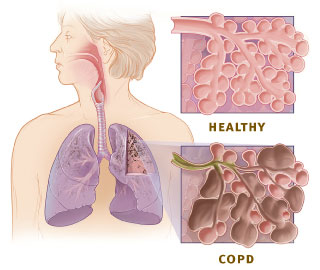The old saying, “after lunch rest a while, after supper walk
a mile’ may hold good; a recent research, published in the
Science Daily, suggests.
The use of lipids/fats and glucose in muscle
depends on the circadian rhythm and may have a role in metabolic disorders like
obesity and diabetes.
The research team performed a number of functional genomics
studies that established the link between HDAC3 (Histone Deacetylase3) and the
circadian clock.
In normal mice, when the mouse is awake, the clock in the
muscle anticipates a feeding cycle and uses HDAC3 to turn off many metabolic
genes. This leads the muscles to use more carbohydrate. When the animal is
about to go to sleep and anticipates a fasting cycle, the clock removes HDAC3.
This leads the muscles to use more lipid.
Although these studies were done
in mice, the researchers speculate that human muscles most likely will follow
the same cycle. The study opens the possibility of promoting body fat burning
by increasing exercise activity during the periods in which muscles use lipid,
which is at night for people.
The
master clock in the SCN (Suprachiasmatic Nucleus in Hypothalamus) drives
circadian rhythms of behavior including the sleep-wake cycle and feeding
patterns.

Overview of biological circadian clock in humans. Biological clock affects the daily rhythm of many physiological processes. This diagram depicts the circadian patterns typical of someone who rises early in morning, eats lunch around noon, and sleeps at night (10 p.m.). Although circadian rhythms tend to be synchronized with cycles of light and dark, other factors - such as ambient temperature, meal times, stress and exercise - can influence the timing as well. (Photo credit: Wikipedia)
Circadian
rhythms are generated at the cellular level by a self-sustained molecular
clock. Exposure to alternating cycles of light and darkness synchronizes the
SCN clock, thereby aligning behavior with the solar cycle.
The
SCN regulates rhythmic synthesis of endocrine factors, including the release of
glucocorticoids, which can potentially synchronize peripheral clocks. Through
its effects on feeding cycles, the SCN can also coordinate the timing of
peripheral cellular oscillators.
In
general, the primary function of clock control of processes is to prepare the
cell/tissue for a predictable event before its onset; through regulation of
metabolism, circadian clocks likely allow anticipation of daily fluctuations in
energy demand and/or nutrient availability (e.g. increased physical activity
during the awake phase).
Common
behavioral/environmental risk factors for cardiometabolic diseases (e.g. food
intake, physical activity, lighting, etc.) are known to influence circadian
clocks in a tissue-specific manner, leading to the suggestion that circadian
misalignment contributes toward obesity, diabetes mellitus, and cardiovascular
disease.
Losing
body fat would be easier by exercising lightly and fasting at night. "It's not a bad idea to take a walk after
dinner."
 |
| Overview of biological circadian clock in humans. Biological clock affects the daily rhythm of many physiological processes. This diagram depicts the circadian patterns typical of someone who rises early in morning, eats lunch around noon, and sleeps at night (10 p.m.). Although circadian rhythms tend to be synchronized with cycles of light and dark, other factors - such as ambient temperature, meal times, stress and exercise - can influence the timing as well. (Photo credit: Wikipedia) |
...
Click here to Subscribe news feed from "Clinicianonnet; so that you do not miss out anything that can be valuable to you !!
...







